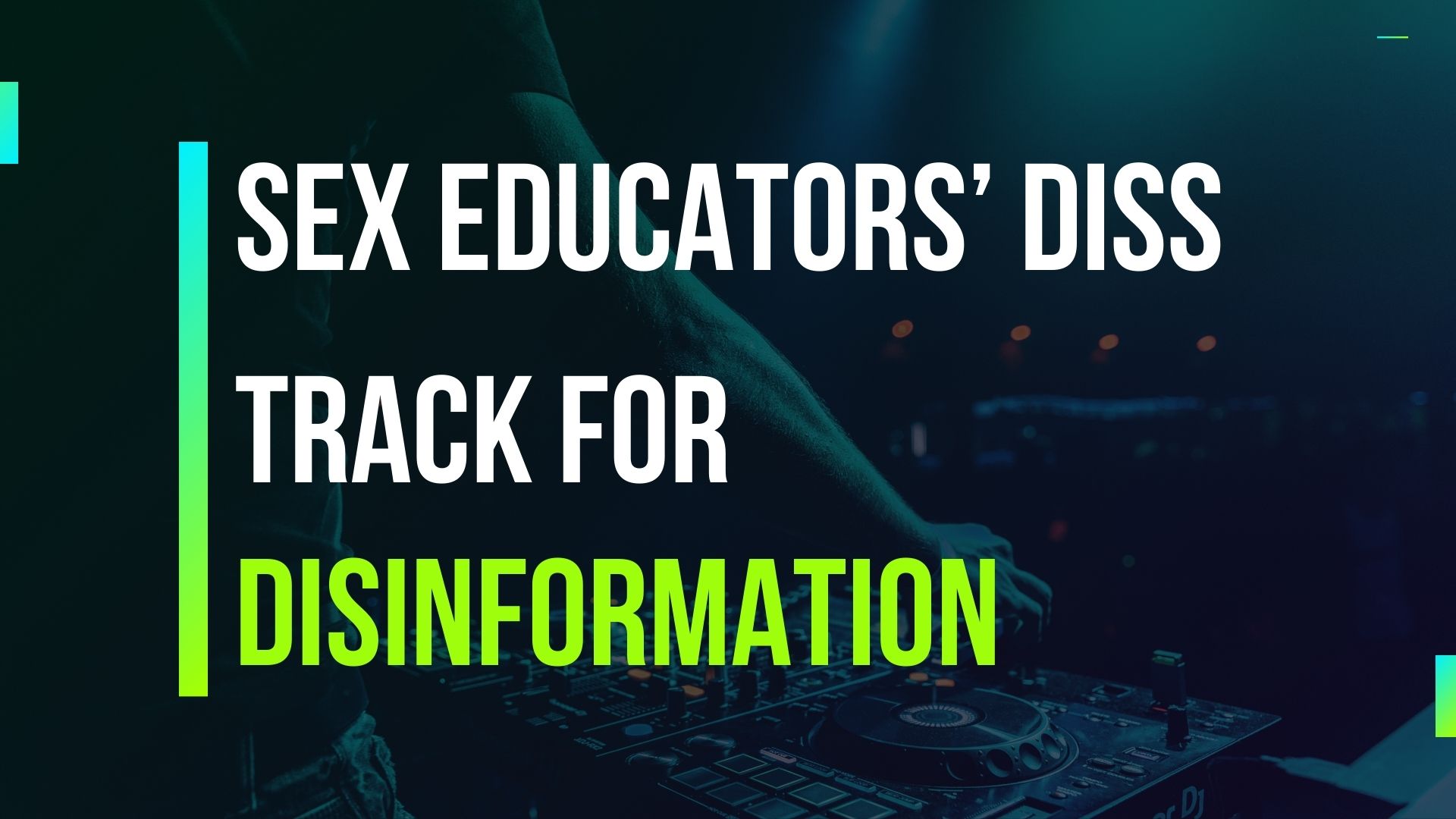Written by Angie, RSEI Educator | Published April 8th, 2024
With so much technology at our fingertips, we can search for information that we need in an instant. Gone are the days of flipping through massive encyclopedias that might already be outdated by the time publication rolls around. With instant access, we should be at the top of our intellectual prowess, but are we? Even though we have easy access to infinite sources of information, it doesn’t mean that those sources are always accurate, whether well intended or not.
Information is shared so easily and readily between folks around the world nowadays, but what happens when false information is shared? This is where misinformation and disinformation come in. Misinformation is information a person believes to be true but is not, while disinformation is information a person knows is false, but they share it anyway. I know what you’re thinking, “What does this have to do with sex ed?” Misinformed sex ed can result simply from misguided folks but is readily solved by teaching accurate information and sharing credible resources. Disinformation in sex ed is a whole different challenge.
Disinformation in sex ed is the result of some not so well-intended people. These people often come from well-funded and highly organized groups, though they can also be standalone individuals–either way, their goal is the same: to confuse and scare others into defunding and dismantling the movement for Comprehensive Sex Ed (CSE) to further their own agenda. As sexual health educators, we are very familiar with the terrible disinformation that is being spread, so I will refrain from repeating it here. If you are not familiar with the anti-sex ed messaging being spread, you can read about the history of what we are up against to learn more. As a conscious effort to diss the disinformers, we are only going to talk about and acknowledge the facts.
Let’s talk about what’s true. Even in the face of the 400+ bills passing through state legislatures aimed at limiting the rights of transgender and gay people, there is overwhelming data from a variety of research institutions like Pew Research Center, Data for Progress, and Public Religion Research Institute that shows people’s support of LGBTQ+ and trans rights across the United States. In fact, 80% of Americans support laws or policies that would forbid LGBTQ+ discrimination in jobs, housing, and public places. When talking specifically about sex ed, more than 60% of parents want sexual orientation and gender identity lessons taught in middle and high school. In addition, 96% support teaching sex ed in high schools, and 84% support sex ed in middle schools. At the end of the day, parents’ top two concerns are mental health and bullying, both of which are known to be reduced for all youth through CSE’s LGTBQ+ specific lessons and interwoven use of inclusive language throughout its curriculum.
With the majority in our corner, we should remain steadfast in our goal to continue to promote CSE for our young people. The argument for CSE is threefold. It is developmentally appropriate, medically accurate, and inclusive. When young people receive CSE, these are some of the results:
- Youth who are engaging with their families and caregivers to discuss sexual health topics
- Youth who are more likely to report various forms of abuse
- Decreased rates of bullying
- Decreased rates of mental health conditions
- Decreased rates of unintended pregnancy
- Decreased rates of STIs
- Increased age of sexual initiation (which is the age a person first has sex)
There are so many reasons to advocate for and promote CSE for all, but there is never a good cause that is not without opposition. With that in mind, if you ever find yourself needing help, don’t forget to call upon your support systems. These can be other educators or colleagues as well as your school, agency, or organization. It could also include other individuals, groups, or organizations you partner with. Working towards building your own community coalition can be a very powerful tool. Be sure to include parents, other educators, faith or community leaders, LGBTQ+ organizations, sex education organizations, public health professionals, and even youth themselves. Faith or community leaders might share more culture or background with the opposition and may be better positioned to have effective conversations. Organizations such as Advocates for Youth, SEICUS, and of course Planned Parenthood can help provide support with speakers, educators, evidence-based research, and more!
There are tons of organization that don’t focus solely or explicitly on LGBTQ+ inclusivity and/or sex ed, that also support CSE, including The American Academy of Pediatrics, The American Medical Association, The American College of Obstetrics and Gynecologists, American Psychological Association, The American Public Health Association, and The Office of Family Ministries and Human Sexuality of the National Council of Churches, just to name a few. For many people, public health professionals, especially pediatricians and mental health professionals, are a trusted source of information and support about young people. In fact, research shows that even in the midst of the COVID pandemic, 74% of Americans still said they had a positive view of doctors. If community leaders, medical professionals, and a plethora of organizations aren’t enough, encouraging youth to share their own experiences and stories about sex education can help others understand the tangible benefits of CSE.
When all is said and done, it is our duty to make changes and challenge the disinformation where we can, not for ourselves but for our youth. They deserve better. They deserve developmentally appropriate, medically accurate, and inclusive sex ed.
Special thanks to Jess McIntosh whose presentation, “Louder Than The Disinformation: Speaking up to Save Sex Ed,” inspired this blog post.





